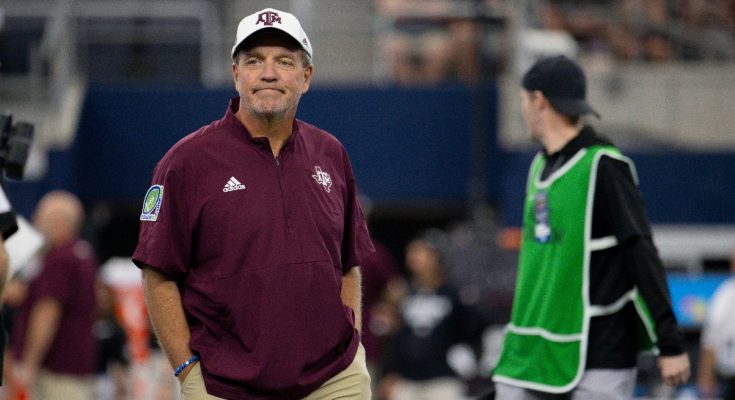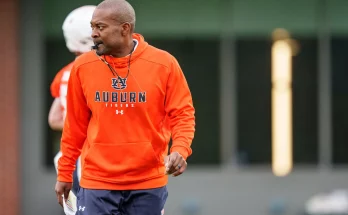Jimbo Fisher, Restless With His Millions, Eyes Return to College Football After Texas A&M Buyout Sends Shockwaves Through Coaching World
It was only a matter of time before Jimbo Fisher grew tired of the view from his luxurious perch on the sidelines of retirement. When Texas A&M made the stunning and costly decision in November 2023 to part ways with the head coach, they handed him a buyout check that shattered records and raised eyebrows across the nation: over $75 million paid out not to coach. It was the largest known buyout in college football history, a staggering figure that instantly became a symbol of the sport’s bloated economics and win-now culture. But for Jimbo Fisher, the unexpected early retirement came with an expiration date.
Now, less than two years later, Fisher is making noise again—not from his ranch in West Virginia or a luxury box in College Station, but from the shadows of college football, where whispers about his next move have grown louder. In recent interviews and offhand comments to insiders, Fisher has let it be known: he’s ready to return. The millions may have bought him time, but they haven’t bought him peace. For a man who has spent decades on the sidelines, orchestrating high-stakes Saturdays and shaping the futures of countless athletes, the quiet has become unbearable.
“I’ve been watching a lot of film,” Fisher reportedly told a former colleague this summer. “I miss the game. I miss being around the players. You don’t realize how much of your identity is tied to it until it’s not there anymore.”
And just like that, the coaching carousel is heating up—earlier than usual and with an unexpected name at its center. Though he remains technically unemployed, Jimbo Fisher is suddenly one of the hottest—and most polarizing—names on the coaching market. Programs with unstable leadership or unmet expectations are already gauging interest, calculating whether they can absorb the PR storm that would follow his hiring. For others, Fisher represents something rare: a coach with national championship pedigree, extensive SEC experience, and still, at only 59, plenty of gas left in the tank.
The timing is curious, yet not entirely surprising. College football is in a constant state of churn. Coaching changes happen in cycles, with summer providing the perfect window for informal conversations, backchannel discussions, and early groundwork. Athletic directors are already making contingency plans for underperforming coaches. And now, one of the sport’s most well-known—and well-paid—figures is raising his hand, ready to re-enter the fray.
The irony isn’t lost on anyone. Texas A&M spent a fortune to get Fisher out of their building, and now someone will pay, potentially handsomely, to get him back into theirs. The Aggies’ decision to fire Fisher was both a bold and brutal admission of underachievement. Despite top-five recruiting classes and enormous resources, the results on the field simply didn’t match the expectations. A 45-25 record over six seasons, capped by inconsistency and offensive struggles, led to mounting frustration. But the optics of writing a $75 million check for mediocrity became a national punchline.
Still, Fisher’s résumé remains impressive. He won a national championship at Florida State in 2013, led the Seminoles to three ACC titles, and helped develop future NFL stars like Jameis Winston, Derwin James, and Dalvin Cook. He’s a program builder, a relentless recruiter, and a coach who has operated at the highest levels of the sport. While his offense stagnated at Texas A&M in recent years, he remains a respected football mind with decades of experience.
The question, of course, is not whether Jimbo Fisher can coach again. It’s whether he should—and more importantly, whether a school will bet their future on a coach who represents both immense promise and considerable risk.
“He’s a proven winner, but you have to know what you’re getting,” said one anonymous Power Five athletic director. “Jimbo’s not walking into a rebuild with no expectations. Wherever he goes next, the pressure will be immediate. There’s no grace period.”
That’s the reality for Fisher. The buyout that made him the talk of college football also raised the stakes for his next move. Wherever he lands, the scrutiny will be intense, and the standard will be nothing short of elite. Critics will be ready to pounce at the first sign of stagnation, armed with reminders of Texas A&M’s record under his leadership and the colossal check it took to make him go away.
But Fisher doesn’t appear to be bothered by the baggage. If anything, it seems to have fueled his fire. Sources close to the coach say he’s been keeping tabs on the landscape, watching games religiously, and maintaining connections with former assistants and colleagues still in the game. He’s reportedly in excellent health, reenergized, and eager for the kind of challenge that once made him one of the sport’s most respected tacticians.
And then there’s the money. With $75 million already in the bank and no buyout clauses tying his hands, Fisher is a free agent in the truest sense. Unlike many fired coaches who carry financial handcuffs from previous contracts, Fisher has no such limitations. He can negotiate freely, accept any position he wants, and even take a pay cut if it means finding the right situation. That flexibility could make him an intriguing candidate for schools both big and small.
But make no mistake: Fisher isn’t looking to be someone’s offensive coordinator or analyst. He wants the headset, the locker room, the spotlight. He wants the pressure, the critics, the Saturday nights under the lights. He wants back in—and he wants it soon.
So where might he land?
The rumor mill has already started churning. Programs like West Virginia—his home state—have long been linked to Fisher, especially if Neal Brown falters. Other names being floated include mid-tier SEC programs looking for a splash, or even ACC schools seeking a return to prominence. While it’s still early, and many programs are waiting to see how the 2025 season begins, one thing is clear: if a seat gets hot, Jimbo Fisher’s name will be on the short list.
But as Fisher eyes a comeback, the college football world continues to evolve. The rise of NIL, the transfer portal, and conference realignment have reshaped the landscape he once ruled. Coaches now face new challenges—not just in Xs and Os, but in managing rosters, egos, and external expectations like never before. Fisher’s ability to adapt to this new era will be tested, and any hiring program will need to be confident he’s ready for that evolution.
For now, Fisher remains on the outside looking in, watching from afar, but not for long. His desire to return is clear, and his patience appears to be wearing thin. He has conquered the financial mountain, secured his legacy with a championship, and endured the scrutiny of a very public downfall. Now, like so many coaches before him, he finds himself pulled back by the siren song of Saturday afternoons.
Because for all the millions, all the comforts of retirement, and all the reasons to stay away, there’s one thing Jimbo Fisher knows for sure: he’s a football coach. And coaches coach.
The next chapter is coming. Where it takes him—and how the world responds—will be one of the most fascinating storylines in the months ahead. Jimbo Fisher is no longer counting his money. He’s counting down the days.



